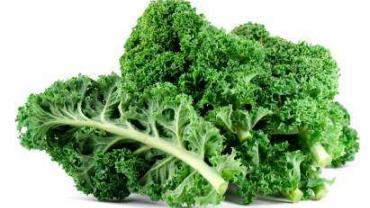
Often the first things that come to mind regarding vitamin K are that it comes from leafy greens and has something to do with blood clotting. These facts actually only pertain to vitamin K1 and they're only a small part of the much larger story of vitamin K. Here's a primer on the other form of this vitamin K2 a nutrient with some very big roles.
Vitamin K1 is critical for proper blood clotting in fact the K designation comes from the Danish researcher who first identified its association with koagulation.However while structurally similar to K1 vitamin K2's physiological function is completely different. K2 acts like a traffic cop for calcium directing calcium to the proper places that it needs to be and keeping it out of places where it might get into trouble.
It is telling that there are seemingly paradoxical cases of concurrent osteoporosis and arterial calcification in the same patients. Clearly then the problem is not too little calcium in the body but rather calcium being deposited in the wrong places. There is too little getting into the bones and teeth and too much being incorrectly shuttled into soft tissue such as arterial walls joints and also precipitating into kidney stones. Vitamin K2 plays a critical role in addressing both of these issues by activating proteins that direct calcium to the proper destination: Osteocalcin (a.k.a. bone Gla protein) is a marker for osteoblast activity (the building up of new bone tissue) and matrix Gla proteins inhibit the deposition of calcium in the blood vessels. (One group of researchers concluded that matrix Gla protein is the strongest inhibitor of tissue calcification presently known.) Both must be carboxylated via vitamin K2 in order to be physiologically active. For this reason simply supplementing with calcium is not the wisest way to reverse bone loss. Without sufficient K2 to activate these calcium-directing proteins it would be like throwing fuel on the fire and potentially increasing soft tissue calcification and bone loss.
Just as vitamin D2 is the plant form of vitamin D while D3 is the form found in animal foods vitamin K1 comes from the aforementioned leafy greens but K2 is the form found in animal products. K2 is also produced by bacterial fermentation in some plant foods such as the traditional Japanese dish of natto fermented soybeans. Beneficial bacteria in human intestines also produce K2 but the amount may not be sufficient to meet the body's needs.
The largest source of K2 in the Western diet is fatty cuts (plus dairy fat) of ruminant animals specifically ruminant animals that consume their natural diets of grass and hay. Ruminant animals concentrate and bioconvert the K1 in grasses into the K2 that ultimately ends up in cheese yogurt butter fatty meats and organ meat (liver in particular). It is also found in egg yolks from hens on pasture where they consume grasses as well.
Vitamin K2 is relatively low in the modern American diet. The disappearance of this critical nutrient from our food supply is due to two main factors: the misguided yet longstanding emphasis on low-fat and fat-free dairy products; and the factory feedlot system. As the vitamin K2 in animal fats initially comes from the K1 in grass animals consuming corn soy and other feedlot rations do not get the concentrated amount of K1 they would if they were grass-finished resulting in far less K2 ultimately ending up in their meat and milk.
It's interesting that more heart attacks seem to occur in winter than summer. We tend to associate this with middle-aged men overexerting themselves while shoveling snow. Granted shoveling snow is more physically demanding than mowing a lawn but there is another theory worth considering: vitamin K2 may be more abundant in the food supply during summer with dairy animals feeding on fresh grass more than in winter. More K2 in the diet could lead to less calcification of coronary arteries resulting in a lowered risk of coronary events during summer.
When patients present with calcium-related issues particularly the paradox of reduced bone mineral density along with soft tissue calcification consider vitamin K2 supplementation as well as encouraging patients to seek out meat and dairy from grass-fed animals.